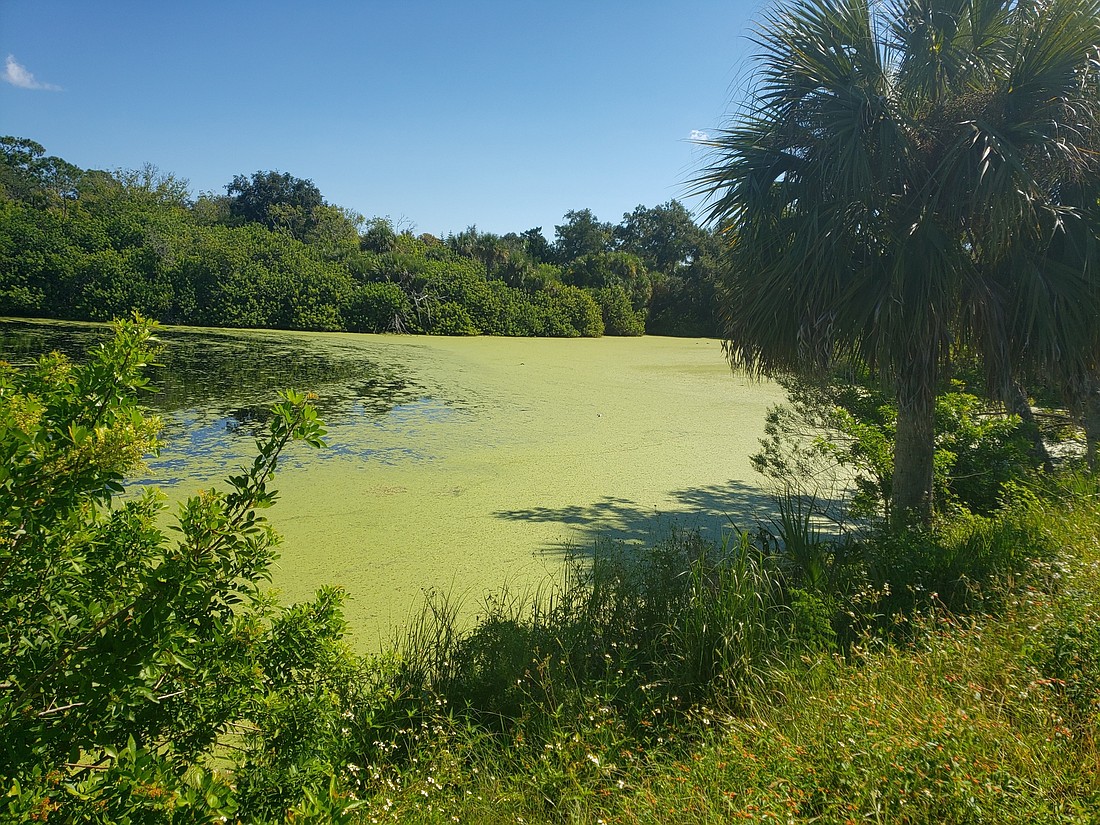- April 19, 2024
-
-
Loading

Loading

People who head to Sanchez Park for a nice day on the water might notice something unsightly on the surface: A globulous pea-soup-green film.
But the film, on closer inspection, isn’t a true film, and it’s not algae — instead, it’s duckweed, a tiny, free-floating flowering aquatic plant that can grow in thick aggregations that, at a distance, can be mistaken for potentially dangerous cyanobacteria.
But duckweed doesn’t pose a hazard to people.
The city of Ormond Beach passed along a citizen’s photos of the duckweed to the FWC, but FWC staff said the FWC doesn’t perform aquatic plant control in that area, and, at any rate, duckweed isn’t harmful, so the FWC generally lets it run its course.
“The FWC does not typically manage duckweed, as it is not considered invasive,” FWC spokeswoman Carli Segelson said. “This plant does not impede navigation and typically does not negatively impact fish and wildlife.”
The roots don’t hang down far enough to snarl boat propellers.
Duckweed prefers freshwater to brackish, but the salinity in tidal creeks approaching the Intracoastal can be low enough to allow it to grow.
The plants are associated with elevated nutrient levels in the water and can grow quickly, doubling their mass in two days. Although duckweeds in small bodies of water like ponds can coat the entire surface, shading out the plants below and causing anoxia and fish kills, that’s less of a risk on larger bodies of water where the surface is disturbed by wave action or boat wakes.
Some varieties have the distinction of being the world’s smallest flowering plant: The flowers can be microscopic, according to the UF Institute of Food and Agricultural Science.
Duckweeds are a food source for a number of animals, including manatees, ducks and some fish, while reptiles and amphibians use them for shelter.